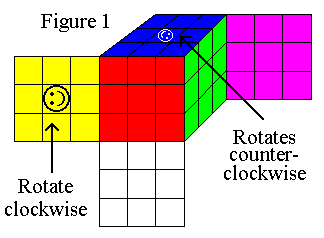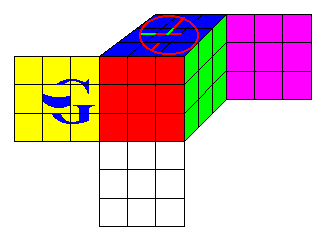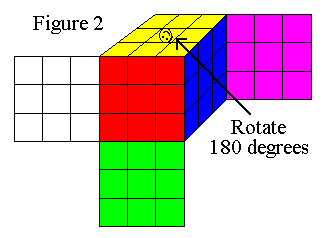How to handle pictures or logos on the faces
If your cube has a picture on each face or a logo in the center of each face, some extra moves are required to take care of this. The first step is to solve the cube using the directions given on the solution page, while simply ignoring the orientation of the centers. If you just have logos, this is simple since they're easy to ignore. If you have pictures, it's a bit harder since the centers are part of each picture and you'll need to look at them to help you determine how to position the corner pieces in step 1 and step 2. Still, use the centers as reference, but don't worry about their orientation until the cube is completely solved.
Once the cube is solved, the following moves can be used to rotate the middle-center pieces of specific sides. In order to describe these moves, we need to define two new moves in addition to the old ones. The new moves are used to describe rotations of the middle slices, both the horizontal slice between the top and bottom sides, and the vertical slice between the left and right sides.
The Letters:
As before:
- U stands for the top (Upper) side,
- F stands for the front side,
- L stands for the left hand side, and
- R stands for the right hand side.
- V refers to the vertical slice sandwiched between the left and right sides.
- H refers to the horizontal slice sandwiched between the top and bottom sides.
Remember, each side descriptor refers to the side with respect to the figure the move is referenced to.
The Numbers:
- As before, numbers describe how to rotate a side, clockwise if 1, counterclockwise if -1, and 180 degrees if 2. Look directly at the side described to determine which direction is clockwise.
- Determine the direction to rotate the V (vertical) slice by looking through the right hand face.
- Determine the direction to rotate the H (horizontal) slice by looking through the top face.
To further clarify this notation, Move 1 has detailed accompanying figures to better describe it.



